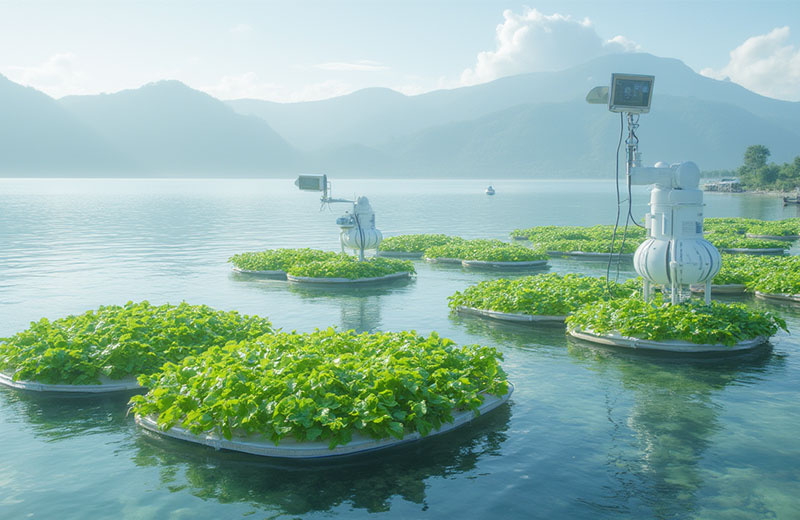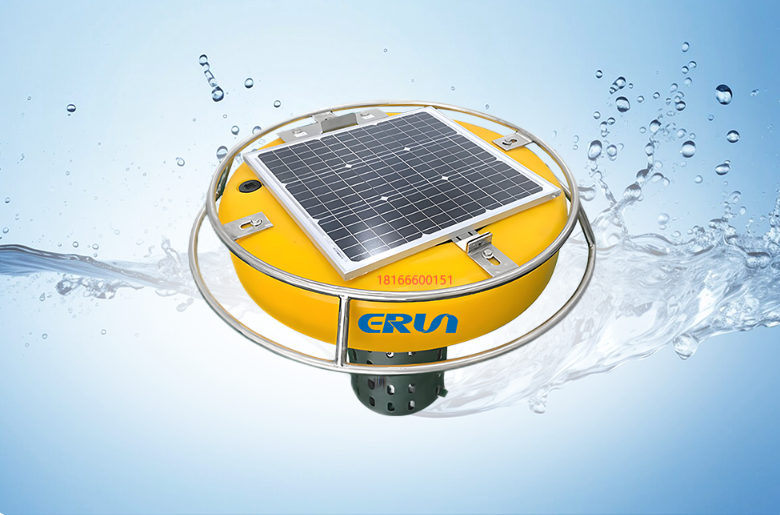In aquaculture, maintaining optimal water quality is critical for fish health, growth, and regulatory compliance. Buoy-type multi-parameter monitoring stations provide real-time data on pH, conductivity (salinity), dissolved oxygen (DO), and other vital parameters, enabling farmers to prevent losses and maximize yields. This guide explores their design, international standards (ISO, EPA), and applications in modern aquaculture.

1. pH Level
- Ideal Range: 6.5–8.5 (WHO aquaculture guidelines).
- Impact:
- Low pH: Stress, reduced feeding, gill damage.
- High pH: Ammonia toxicity, algal blooms.
2. Conductivity/Salinity
- Purpose: Measures ion concentration (saltwater vs. freshwater).
- Optimal Range:
- Freshwater: <2,000 µS/cm.
- Brackish/Saltwater: 10,000–55,000 µS/cm (species-dependent).
3. Dissolved Oxygen (DO)
- Critical Threshold:
- Fish Survival: >5 mg/L (cold water), >4 mg/L (warm water).
- Optimal Growth: 6–9 mg/L.
- Risk: Hypoxia (<2 mg/L) causes mass mortality.
These solar-powered, autonomous systems integrate sensors, data loggers, and telemetry for 24/7 monitoring:
1. Sensor Array
- pH Sensor: Electrochemical glass electrode (ISO 15839 compliant).
- Conductivity Sensor: 4-electrode cell for precise salinity measurement.
- Optical DO Sensor: Luminescence-based (no membranes, minimal drift).
2. Data Transmission
- GSM/GPRS: Sends alerts via SMS/email for parameter breaches.
- Satellite/IoT: Remote area connectivity .
3. Buoy Design
- Materials: UV-resistant polyethylene, anti-biofouling coatings.
- Anchoring: Mooring lines with marine-grade chains.
| Standard | Scope | Relevance |
| ISO 15839:2003 | Performance testing for water sensors | Ensures pH/DO sensor accuracy |
| EPA 841-B-21-001 | Aquaculture water quality guidelines | Defines DO, pH, salinity limits |
| ASTM D1066 | Sampling steam & condensed water systems | Validates conductivity calibration |

1. Offshore Fish Farms
- Challenge: Monitor DO fluctuations from tides/algae.
- Solution: buoys with self-cleaning DO sensors.
2. Shrimp Ponds
- Challenge: Sudden pH drops from organic waste.
- Solution: ERUN stations with pH alarms.
3. Hatcheries
- Challenge: Precision salinity control for larvae.
- Solution: ERUN multi-parameter systems (±0.1% accuracy).
1. Deployment
- Location: Avoid shaded areas (maximizes solar power).
- Sensor Depth: Place pH/DO sensors 0.5–1m below surface.
2. Calibration
- Frequency:
- pH/Conductivity: Monthly.
- DO: Quarterly (optical sensors), monthly (electrochemical).
- Standards: Use NIST-traceable buffer solutions.
3. Anti-Fouling
- Mechanical Wipers: Clean sensor surfaces daily.
- Copper Alloy Guards: Inhibit biofouling in saltwater.
Buoy-type multi-parameter stations are indispensable for modern aquaculture, providing real-time insights into pH, conductivity, and DO. By adhering to ISO 15839 and EPA standards, farmers can optimize water conditions, prevent losses, and meet sustainability goals. Invest in robust, self-cleaning systems and integrate AI for proactive management.